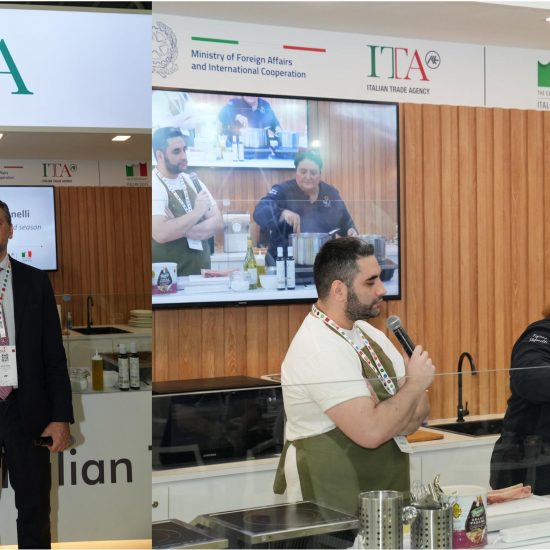The return of Qatari and Saudi Arabian issuers to the market and high levels of liquidity in Indonesia as well as Turkey’s efforts to tap all available financing sources have boosted issuance of sukuk 17.6% in the first five months of 2019.
Foreign currency issuances also increased 15.6% during the period, explained primarily by Turkey’s issuances but also issuances by Qatari banks and Saudi corporate, according to Standard & Poors.
S&P Global Ratings now anticipates total sukuk issuance of $115 billion this year, including $32 billion of foreign currency issuances. However, this represents little-to-no growth on the $114.8 billion seen in 2018, with selective investors, worsening geopolitical stability in the Middle East, and challenges inherent to sukuk likely to hold back the market, it said. In addition, Gulf Cooperation Council (GCC) issuers continue to prefer conventional financing, despite their significant needs, with only a handful tapping the sukuk market so far this year.
Total sukuk issuance increased to $67.9 billion in the first five months of 2019, compared with $57.7 billion over the same period in 2018. Sukuk issuances from Indonesia, Turkey, and to a lesser extent Saudi Arabia and Qatar, supported the activity of the sukuk market.
Of particular note, the Central Bank of Indonesia started to offer sukuk as liquidity management instruments for its financial institutions. This resulted in an issuance total of about $7.6 billion and led to a sharp increase in issuance volumes out of Indonesia.
The other noticeable contributor was Turkey, where issuers (primarily sovereign and financial institutions) tapped the market for $5.7 billion in the first five months of 2019, compared with $1.6 billion in the same period in 2018. Turkish issuers have been under significant pressure over the past several months given their significant external debt and declining rollover ratios. They are, therefore, actively tapping all the available pockets of liquidity including the sukuk market.
In the GCC, Qatari issuers returned to the market through sovereign and bank issuances and a couple of Saudi corporates tapped the market for relatively large foreign-currency-denominated issuances. In contrast, Bahrain, the United Arab Emirates (UAE), and Malaysia saw a drop in issuance volumes. In Bahrain, the government had less need to tap capital markets as funds from the $10 billion GCC support package began to be disbursed. For the UAE, the drop came because corporates front-loaded their issuance programs in 2018 to prepare for less supportive market conditions.
Total sukuk issuance dropped in Malaysia due to lower sovereign activity. This was partly compensated by issuances from the central bank. Overall, these developments resulted in a slightly more balanced market structure by geography.
The market has seen an uptick in the first five months of the year, but S&P thinks it will at best reach the same volumes seen in 2018. We see several reasons for this:
Issuers in the GCC continue to prefer conventional instruments: The number of conventional issuances continued to increase in first-half 2019. Sukuk are more complex instruments to issue compared with conventional bonds. Moreover, the less developed nature of local capital markets in the GCC means that many issuers prefer the international capital market.
Sukuk reopening (or issuance under an unlimited local currency program) in Saudi Arabia continued to support the GCC contribution to the global sukuk market. Saudi issued more than $9 billion of sukuk in the first five months of 2019. The standardization of legal documents and Sharia interpretation, together with a clear roadmap for the development of local capital markets in the region, would be a game changer.
Geopolitical risk is returning to the front seat: Tensions in the Gulf increased in May 2019 after sanction exemptions for countries buying oil from Iran ended. Since then, Iran has been accused of retaliating by allegedly damaging infrastructure and commercial shipping vessels in the region. A few additional attacks on GCC countries’ assets also took place recently.
Moreover, Iran is now threatening to restart its nuclear program. In our base case, we do not expect direct military conflict between the U.S. and Iran or their regional allies. Furthermore, we expect the Strait of Hormuz to remain open. That said, we see the possibility of tensions increasing further between the respective regional allies of Iran and the U.S., with possible spillover effects in Iraq, Syria, and Yemen.
Unpredictability in the region could increase should Russian support for Iran become more pronounced. In the short term, ongoing or rising tensions could result in higher oil prices and increasing fiscal revenue for the oil-exporting countries. If tensions do not abate, this additional revenue could be offset by a further increase in funding costs, reduced appetite for instruments coming from the GCC region, or major foreign funding outflows.
Oil price volatility remains a significant determinant: Depending on how the geopolitical situation unfolds, oil prices might increase, resulting in lower financing needs for GCC governments. We continue to assume the Brent oil price will average $60 a barrel (/bbl) for 2019. This would likely mean higher financing requirements for GCC governments compared with 2018, when Brent averaged about $72/bbl. Our assumptions are broadly in line with the current oil price.
Investors are becoming more selective: That the U.S. Federal Reserve has paused its cycle of rate hikes and the European Central Bank is maintaining lower interest rates for longer is helpful for global liquidity. However, investors are becoming more selective because they are concerned about the underlying reasons for these changes in global monetary policy. That means cost of funding will remain higher than it used to be and liquidity channeled from the developed market to the sukuk market will reduce.
In the first five months of 2019, there have been a few interesting trends, such as green sukuk interest.
Some interest in tapping the nascent green sukuk market has been noticed, as the industry realizes its potential contribution to sustainable finance. Both the government of Indonesia and UAE-based diversified group Majid Al Futtaim issued green sukuk in first-half 2019 for a total of $1.35 billion.
This figure is still small compared with $168 billion of issuance in the global green bond market in 2018, but interest is increasing.
Green sukuk have reportedly allowed issuers to access not only the pool of conventional investors interested in green projects, but also Islamic investors. This could lead to potential excess demand and better financing conditions. Given the rapid increase in energy demand and the objective of shifting energy provision to greener sources in some core Islamic finance countries, particularly Malaysia, the UAE, and Saudi Arabia, the opportunities for green sukuk appear significant.
The use of a new variation of Mudaraba-murabaha structure to resolve issues related to the potential negative interference of the mudaraba contract with the murabaha one is another interesting trend. Saudi Telecom Company utilized a restricted mudaraba contract where the underlying assets are leased to the sponsor of the sukuk (Saudi Telecom), thereby recreating the missing contractual obligations link in other mudaraba-murabaha transactions. We believe such innovation could reassure investors, who were expressing concerns regarding other mudaraba-murabaha structures.
The use of blockchain and smart contract protocols could help the market to expand more quickly, especially if it makes the process of sukuk issuance smoother and clarifies responsibilities under different scenarios of issuance or resolution. Blockchain could help resolve challenges related to the traceability of assets to help investors understand the risks related to their instruments over time.
Blockchain could also improve the traceability of cash flows, while smart contract protocols help the implementation of prompt corrective action if one of several assets are not performing up to expectations. They could even provide out-of-court resolution for sukuk disputes because the resolution path will be coded under different scenarios in the smart contract protocols.
Also published on Medium.





